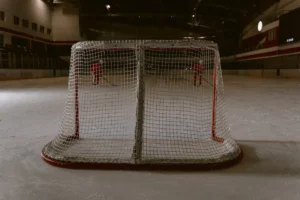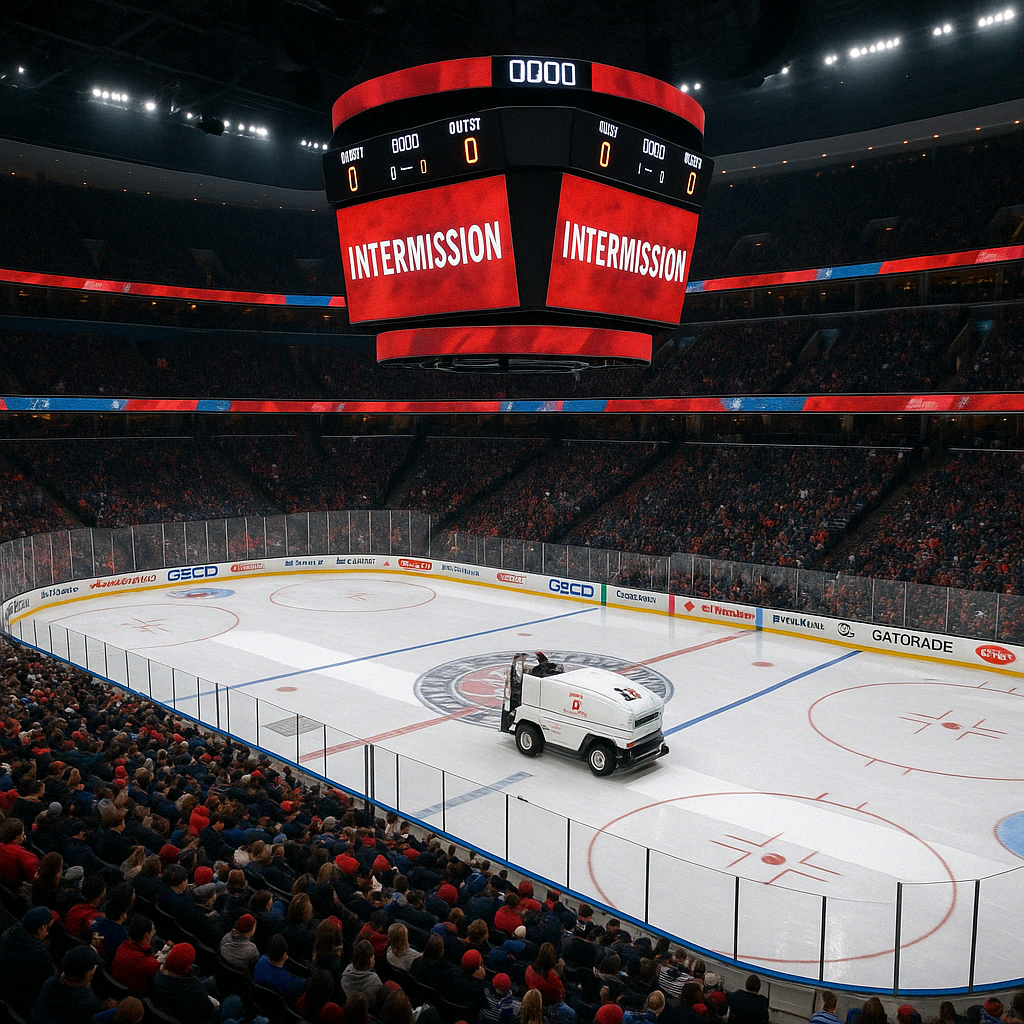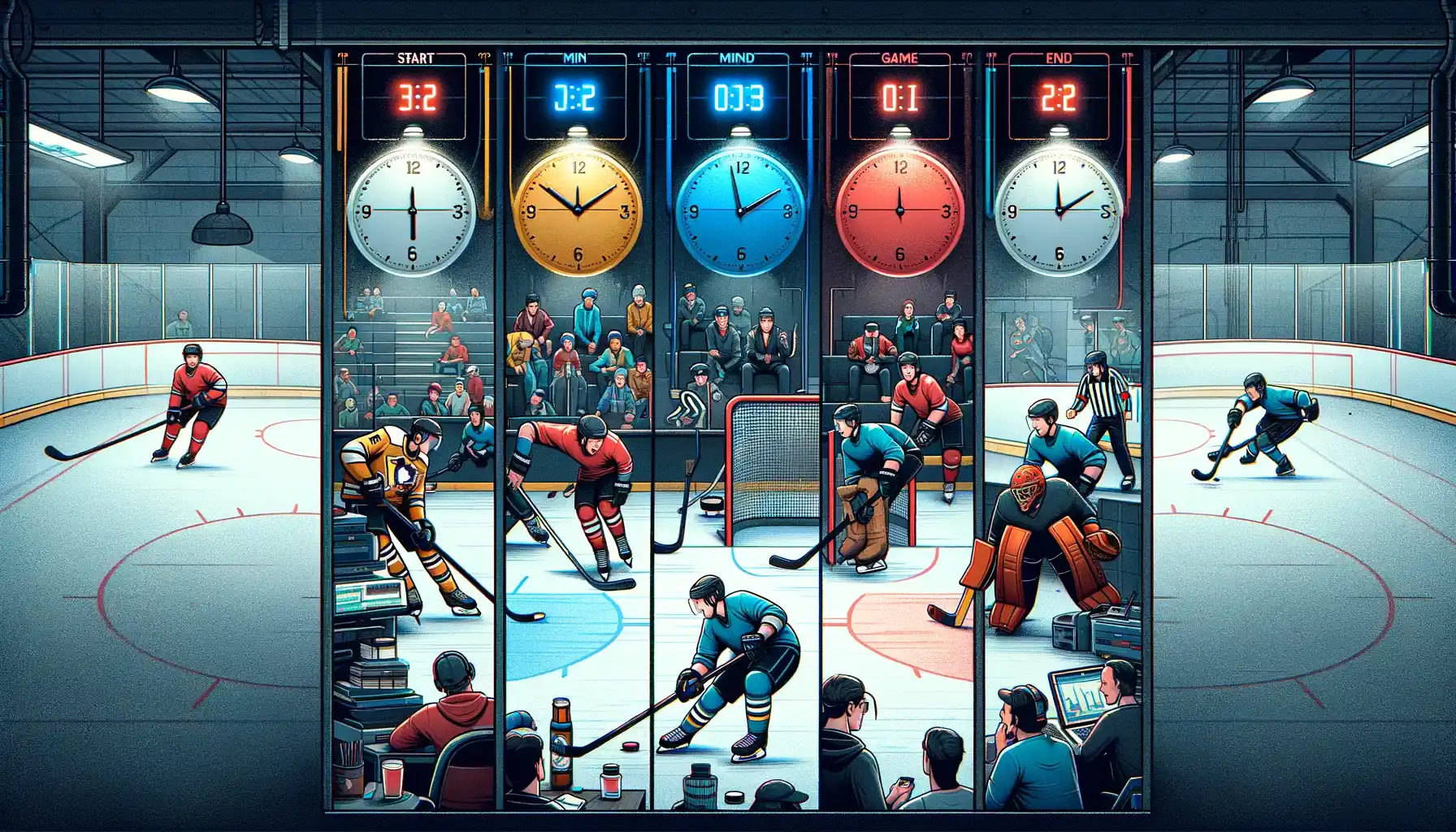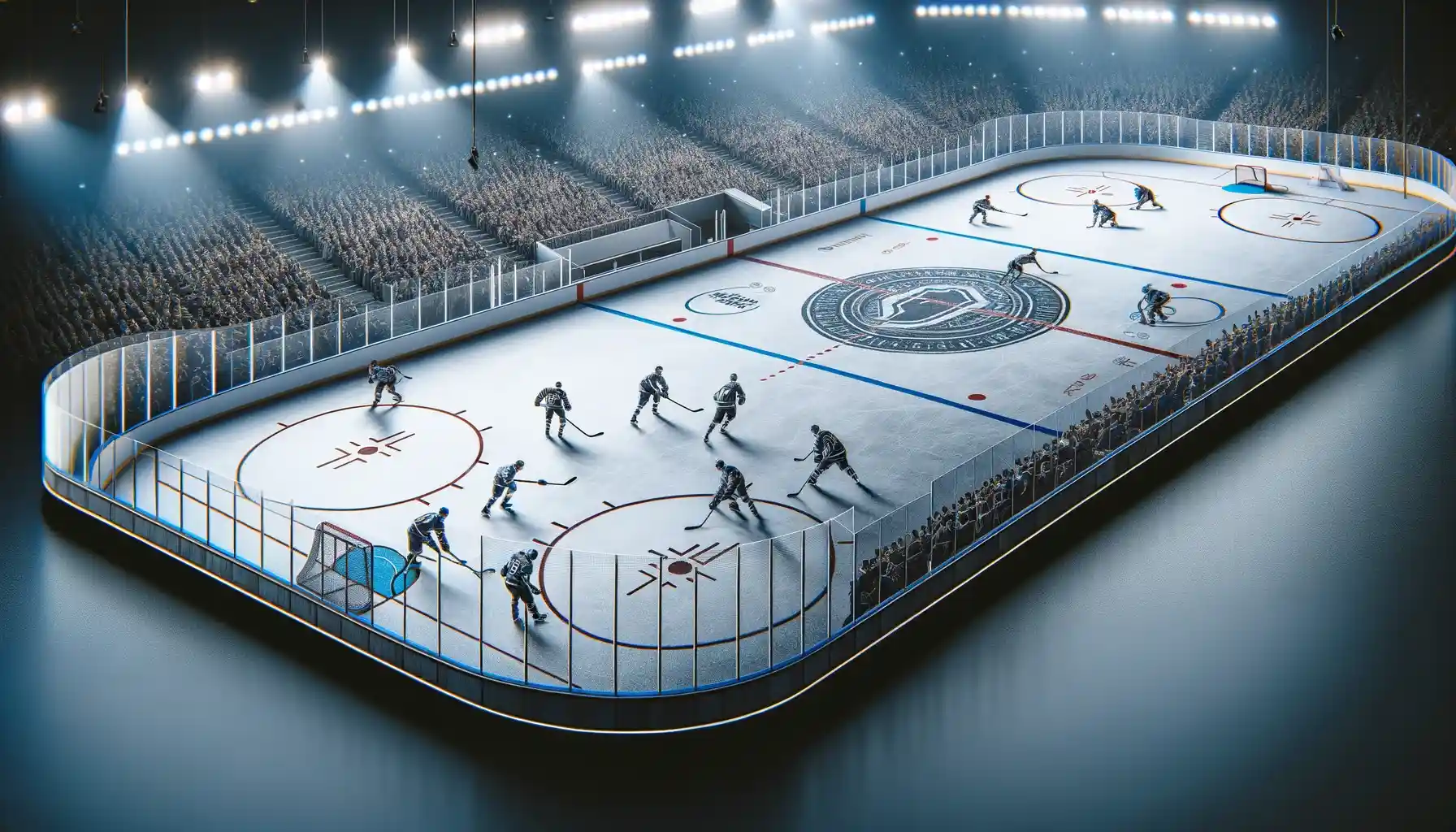A regulation NHL hockey goal measures 72 inches wide, 48 inches tall, and 40 inches deep—standards followed by most pro leagues worldwide. Youth and junior hockey nets are slightly smaller to accommodate developing players. These dimensions aren’t just numbers—they define how the game is played, influencing goalie equipment, scoring strategies, and even the sport’s evolution. In this guide, we’ll explore how goal sizes vary across leagues, why consistency matters, and what changes might be on the horizon.
Hockey Goal Dimensions Explained
The size of a hockey goal isn’t arbitrary—it’s engineered to test skill, strategy, and reflexes. The NHL sets the gold standard that many leagues around the world follow, with strict guidelines to ensure fairness and consistency across competitive levels.
🏒 NHL Standard Goal Dimensions
- Width: 6 feet (72 inches / 1.83 meters)
- Height: 4 feet (48 inches / 1.22 meters)
- Depth: Frame is 44 inches deep; netting is typically 40 inches
- Frame: Constructed from durable steel tubing, about 2 inches in diameter
These specifications are also used by the AHL, NCAA, and most high school leagues.
🧊 Youth and Junior Hockey Net Dimensions
Designed to match the size and skill of younger players:
- Youth: 54 inches wide x 44 inches high x 24 inches deep
- Junior: 60 inches wide x 44 inches high x 24 inches deep
These smaller nets help young goalies develop positioning and players work on accuracy before graduating to the full-size dimensions.
For those asking, “what is the size of a youth hockey net?“, this breakdown clarifies the distinctions that affect training and gameplay strategies.

Let’s compare the net sizes across different hockey leagues with this table, highlighting variations in hockey goal dimensions.
Comparison of Hockey Goal Dimensions Across Leagues
| League Type | Width (inches) | Height (inches) | Depth (inches) |
|---|---|---|---|
| NHL | 72 | 48 | 40 |
| Youth | 60 | 44 | 24 |
| Junior | 60 | 44 | 24 |
Why Goal Size Needs to Stay Consistent
Uniform dimensions aren’t just about regulation—they shape how hockey is played at every level. For skaters, it ensures that skills built in minor leagues transition seamlessly to adult play. For goalies, it offers a consistent framework to master angles, movement, and reflexes.
There’s been chatter about increasing goal size, especially with players getting bigger and faster. But every inch added could drastically tip the balance between scoring and goaltending. As of now, leagues are holding firm on tradition—but it’s a debate that continues to heat up.
Enhance your understanding of hockey’s defensive strategies with insights from Ice Hockey Goaltending, get equipped with knowledge on goalie gear in Ice Hockey Equipment, and explore how different roles, especially goaltenders, adapt to the game in Ice Hockey Positions.
Hockey Goal Components & Portability
Hockey goals are built for strength and durability. NHL goals feature a steel frame roughly 2 inches in diameter, built to endure the speed and force of slap shots. The netting is made from high-tensile synthetic fibers designed to absorb impact without tearing.
🔧 Weight & Portability
- NHL Goals: ~40 pounds—heavy enough for stability, light enough for quick rink adjustments
- Youth Goals: Lighter and often collapsible to improve portability
Modern designs increasingly feature modular construction, making setup and breakdown easier for teams and venues. These updates reflect the sport’s continued innovation while maintaining structural integrity.
Gain a deeper understanding of game strategies and timings by exploring Power Play Hockey, understanding the structure and duration of the game in Hockey Periods, and discovering how game length can influence strategies around the goal in Hockey Game Length.
The Evolution of Hockey Net Design
The history of hockey nets goes back to when players used rocks or sticks to mark goal zones. In the 1890s, wooden posts were introduced, and eventually a crossbar formed the rectangular goal we know today.
This standardization has ensured fairness while keeping the challenge intact—balancing the increased size and speed of modern players with the traditions of the game.
Explore how the dimensions of hockey nets have evolved over time in the following table.
| Time Period | Width (inches) | Height (inches) | Notable Changes |
|---|---|---|---|
| Early Days | Varies | Varies | Natural markers; no standardized size |
| 1900s | 72 | 48 | Crossbar added, square shape adopted |
| Modern Era | 72 | 48 | NHL/IIHF standardization |
The Future of Hockey Goal Design
Looking ahead, hockey goals might get a tech upgrade or a subtle size adjustment. As players get faster and equipment more advanced, some believe that enlarging the net slightly could enhance scoring without diminishing goaltending skill.
🧪 What’s on the Horizon?
- Smart Nets: Sensors to detect puck crossings for accurate scoring
- Transparent or Adaptive Materials: Better spectator visibility without affecting safety
- Wider Nets?: Ongoing debate about slightly increasing net width due to goalie size and improved equipment
Still, the essence of hockey lies in its balance—and any future changes would need to preserve the delicate equilibrium between offense and defense.
FAQs on Hockey Goal Dimensions
How big is an NHL goal?
A standard NHL hockey goal measures 72 inches wide, 48 inches tall, and 40 inches deep. This size is shared across most major professional leagues including the AHL and NCAA.
What is the size of a youth hockey net?
Youth hockey nets are typically smaller to accommodate younger players. Common dimensions are 54 inches wide, 44 inches high, and 24 inches deep.
Have there been significant changes in NHL net sizes over the years?
The core dimensions have stayed the same for decades. However, there have been small adjustments in net depth and frame design to improve goalie safety and scoring accuracy.
What materials are typically used in constructing hockey goals?
Hockey goals are built with high-grade steel for the frame and high-tensile synthetic fibers for the netting—capable of withstanding the force of pro-level shots.
Why are goalie equipment regulations mentioned alongside net size?
Because goalie pads, gloves, and blockers directly affect how much of the goal is covered. Regulating gear dimensions keeps scoring competitive and prevents the goalie from dominating the net space unfairly.
What are the official dimensions of a professional hockey goal?
In professional leagues like the NHL, hockey goals measure 6 feet (72 inches) in width, 4 feet (48 inches) in height, and 40 inches in depth. These measurements are standardized across top-level play.
Have there been significant changes in NHL net sizes over the years?
Minor tweaks have occurred, especially in net depth and net design, but the core 72″ x 48″ dimensions have remained consistent for decades.
What materials are used to construct hockey goals?
Frames are typically made from high-grade steel, and the netting is composed of synthetic fibers strong enough to absorb impact from pucks traveling over 90 mph.
Why are goalie equipment regulations relevant to net size?
Because larger gear can visually reduce the scoring area, goalie equipment is regulated to keep offensive play competitive.
What are the standard dimensions of a professional hockey goal?
72 inches wide, 48 inches tall, and 40 inches deep in the NHL and most major leagues.
The size of goalie equipment is crucial in relation to the net dimensions, as outlined in this table.
Goalie Equipment Size Regulations
Goalie Equipment Size Regulations
| Equipment Type | Maximum Size Allowed | League Regulations |
|---|---|---|
| Pads | 11 inches wide | NHL, IIHF |
| Gloves | 45 inches perimeter | NHL, IIHF |
| Blockers | 8 inches wide | NHL, IIHF |
The Future of Hockey Goal Design
Looking ahead, hockey goals may evolve in both materials and dimensions. As player size and shot speed continue to rise, some argue that slightly larger nets could lead to more dynamic, high-scoring games. But tradition still holds weight.
🧪 Emerging Technologies and Concepts
- Smart Goalposts: Embedded sensors for puck tracking and real-time scoring validation
- Adaptive Materials: Transparent or flexing materials for better visibility without compromising safety
- Modular Nets: Faster setup and takedown without sacrificing structure
Yet, every proposed change must preserve the balance between offensive creativity and goalie defense. Increasing goal size could improve scoring but would drastically alter how the game is played.
Dive deeper into the intricacies of the game by exploring the impact of Hockey Penalties and understanding the significance of PIM in Hockey.
Final Thoughts
As the game evolves, so too does the conversation around goal post size and what it means for the sport’s future. From its humble beginnings marked by rocks to today’s steel-framed, precision-engineered standards, the hockey goal has come a long way.
Whether debates continue over scoring frequency or goalie gear, one thing remains clear: the goal is more than just a frame—it’s a benchmark of challenge, tradition, and triumph. And for players and fans alike, understanding its dimensions is key to appreciating every hard-earned goal that finds the back of the net.
Deepen your hockey knowledge by understanding key Ice Hockey Rules, exploring the strategic nuances of Icing in Hockey, and learning about the critical importance of Hockey Faceoffs in the game.




